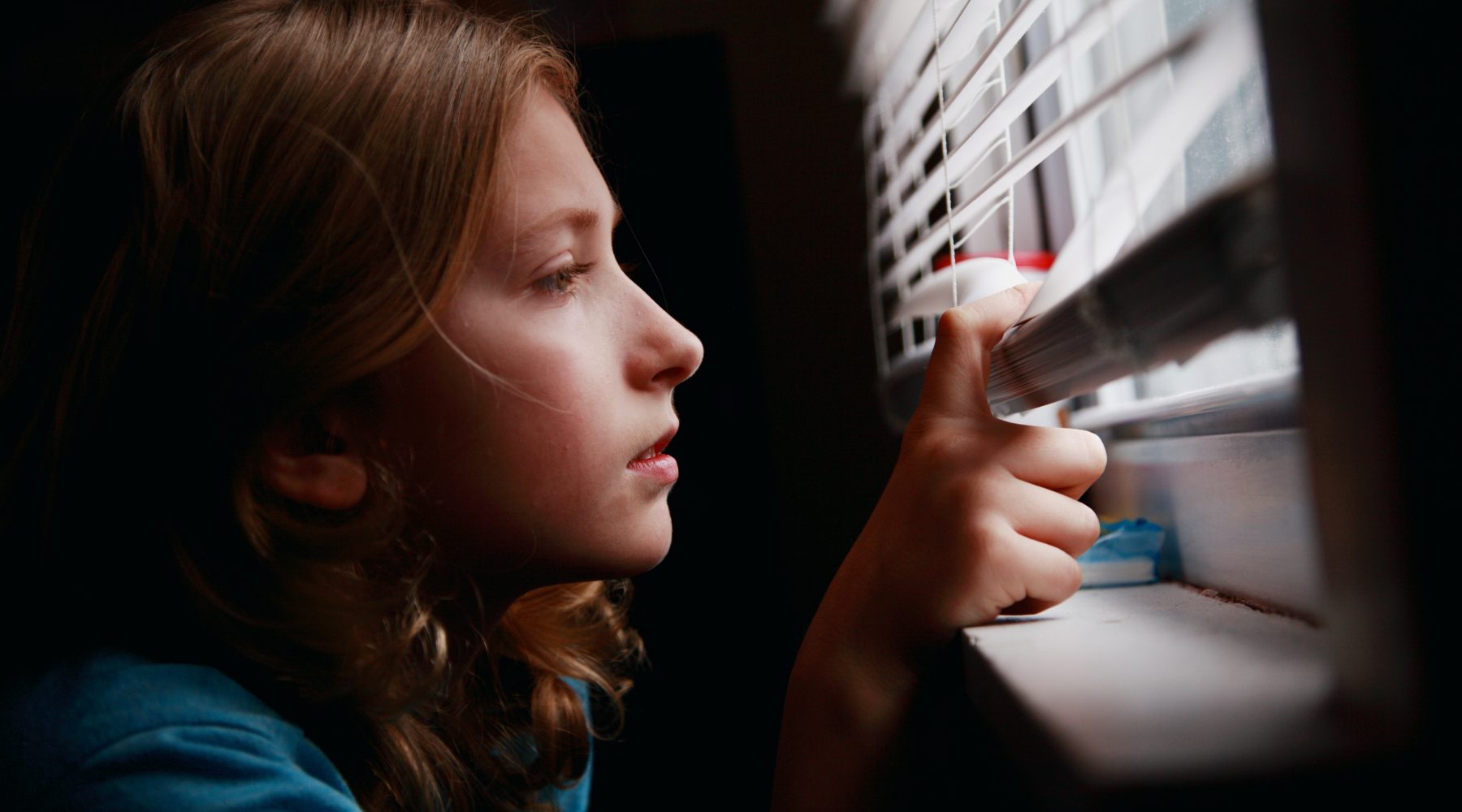What’s the best way to talk to children?
It can be challenging to know precisely what to say to children about the coronavirus, Professor Hudson said. This challenge is exacerbated if children already have a tendency to be “worriers”, or if the caring adult they are dealing with is someone who tends to be anxious and worried.
“It is normal to feel more anxious at a time like this, when there is more uncertainty than usual and when there is a real, increased risk to our health” the Professor said, adding that one of the most useful things we can do to help reduce children’s worry is to be calm ourselves.
“Children take cues from you about how to react and they learn how to handle challenging situations by watching and listening to what you say” she explained.
While there has been a lot of panic and uncertainty, as well as rumours and misinformation, educators and other adults have an important opportunity to be the voice of stability and reason.
There may be some children and young people who will find it hard to switch off their worry about the virus and the uncertainty that surrounds it. These children might need some more input from parents and educators.
This is not positive thinking, it is realistic thinking. Sticking to the facts can help children to not blow things out of proportion.
Children who experience high levels of anxiety tend to think the worst in a situation, and as a result it can be beneficial to learn strategies to help them to be more realistic in their thinking.
It can also be helpful to encourage children to problem solve “Let’s say we did have to stay inside for a while, what would we do? How would we handle it?” Sometimes thinking about how they would cope with the worried outcome can help them realise, even if the worst does happen, I will be able to handle it.
Try not to provide excessive reassurance statements like: “Don’t worry” “There is nothing to worry about.” “You will be okay.” “Nothing bad is going to happen.” This is not helpful and you can’t truthfully guarantee that nothing bad will happen.
There is evidence that sometimes when adults provide reassurance it makes children more anxious. It can also actually prevent children from being able to develop their own skills around thinking rationally and staying calm and learning that they will be okay.
Instead of answering the questions, ask questions like: “What do you think you can do to help you worry less?” “What worked when you worried about this last time?” “What do you think you can say to yourself to help you worry less?”
Learning to live with the uncertainty and tolerating not really knowing the outcome can be really challenging. The truth is we don’t know what is going to happen. That is hard for adults to tolerate and also challenging for children to comprehend.
But this is good practice given that we can never 100 per cent guarantee anything about life. Use this situation as a learning opportunity. This will help provide learning for your child in the future when they are faced with other new or uncertain situations.
Should we be avoiding the news?
Avoid news that is sensationalist and fearmongering but stay connected to news that provides facts. We do not want to shelter children from the facts. Keeping children accurately informed helps them to develop a realistic approach to situations.
Watching news that does not provide a calm rational perspective of the situation will likely further fuel their anxiety and prevent the development of realistic thinking. Importantly however, protecting children from all potentially bad news will also be likely to fuel their anxiety in the long run.
This is because avoiding difficult or anxiety-provoking situations also prevents the child from opportunities to learn about the facts of the situation, and to learn that even when there are challenging situations, they can handle it.
Is there a perfect time to have the coronavirus conversation?
Provide opportunities for children to talk about their worries when you have time to truly listen.
Listen to their worries and acknowledge what they are feeling: “Sounds like you are really worried about what might happen.” For most children this may be all they need – someone to listen to their fears and worries.
Should we avoid talking about things like supermarket shortages in front of them?
For some children, seeing bare shelves in the supermarket might create alarm and they may start asking questions like “Are we going to run out of food?” Again, this provides a learning opportunity.
Children who are overly worried will start to ask lots of questions and ask them over and over again.
Rather than protecting them too much and keeping them away from it, we need to help them to develop realistic thinking. This means when we are talking about the shortages, provide a calm rational response rather than overdramatic comments about how bad the situation is.
We have been incredibly lucky in Australia to have access to an incredibly rich array of food at our finger tips. We don’t need access to this 24/7 in order to survive. People lived in Australia for thousands of years without supermarkets.
We can communicate the accurate message to children that we have the capacity to survive on fewer trips to the supermarket.
How can you tell if it is impacting them, if they seem fine?
Children who are overly worried will start to ask lots of questions and ask them over and over again. This is a sign their worry is hard for them to switch off. Look for changes in their mood. Are they more irritable or sad more than usual? Are they complaining of headaches or muscle aches more than usual? Are they having trouble sleeping? Are they avoiding any situations that are not part of the recommendations (e.g., not even talking to friends online)?
For some children they might be excessive in their reactions (washing too much, checking too much, avoiding any contact), this might be an indication that they are worrying a lot.
Again, it is normal to experience a bit more anxiety at the moment. Anxiety, even though it is uncomfortable, it is not a bad thing. Adults can can help to prevent the anxiety from becoming a problem by acknowledging it, encouraging the child to handle the situation and stick to the social distancing recommendations or self-isolation recommendations (that is not excessively sticking to the rules).
If you think a child’s anxiety is impacting on their life, there are many different resources you can access online.
If the children are at home in isolation, how can we make this work for them?
Work with the child’s family to set up a routine that works for the whole family. Get their input on how they want to set up the day (e.g., when to have breaks, when to read, when to play). Having control over the day can help to ease the stress. Program fun things into the day as well.
One of the risks in isolation is feeling cut off from friends and family. Encourage families to think about ways that they can still remain connected to people in their social network (for example, through videocalls and phone calls).
Routine and purpose is important, so keeping a number of routines in place (for example, school hours, recess and lunch, play time, sleep). Consider picking different days for certain activities to break up the week (for example, Monopoly Mondays).
What kind of questions can we anticipate?
Children may ask all sorts of questions ranging from information-seeking questions like “What is the coronavirus and how do I catch it?” to more worried questions like “Am I going to die?”
For information-seeking questions, find out what they know already and match the information accordingly with stigma-free, accurate and truthful information. There are plenty of health websites available that provide this information.
For questions that indicate the child is worried, acknowledge the worry and help them to find realistic evidence.
Are there different ways to communicate based on ages?
The information you provide needs to be matched to children’s level of understanding.
One way of ensuring it is being “pitched” at the right level is by first finding out from the child what they already know and then talk at the level of understanding they have communicated to you, using the same words they have used.
Importantly the information should be accurate and should avoid incorrect assumptions that might lead to stigma. Don’t exaggerate but at the same time don’t miss out on important information, such as the importance of handwashing and avoiding hugs with people outside the immediate family.
It is also important to let children know that these restrictions won’t be in place forever and there will be a time when we can go back to kisses and cuddles with grandma and grandpa. But for now, to keep us safe, we need to do things differently.
Professor Jennie Hudson is Director of the Centre for Emotional Health, Department of Psychology at Macquarie University. This article has been adapted from its original form. The original form may be accessed here, on the Macquarie University Lighthouse.

















